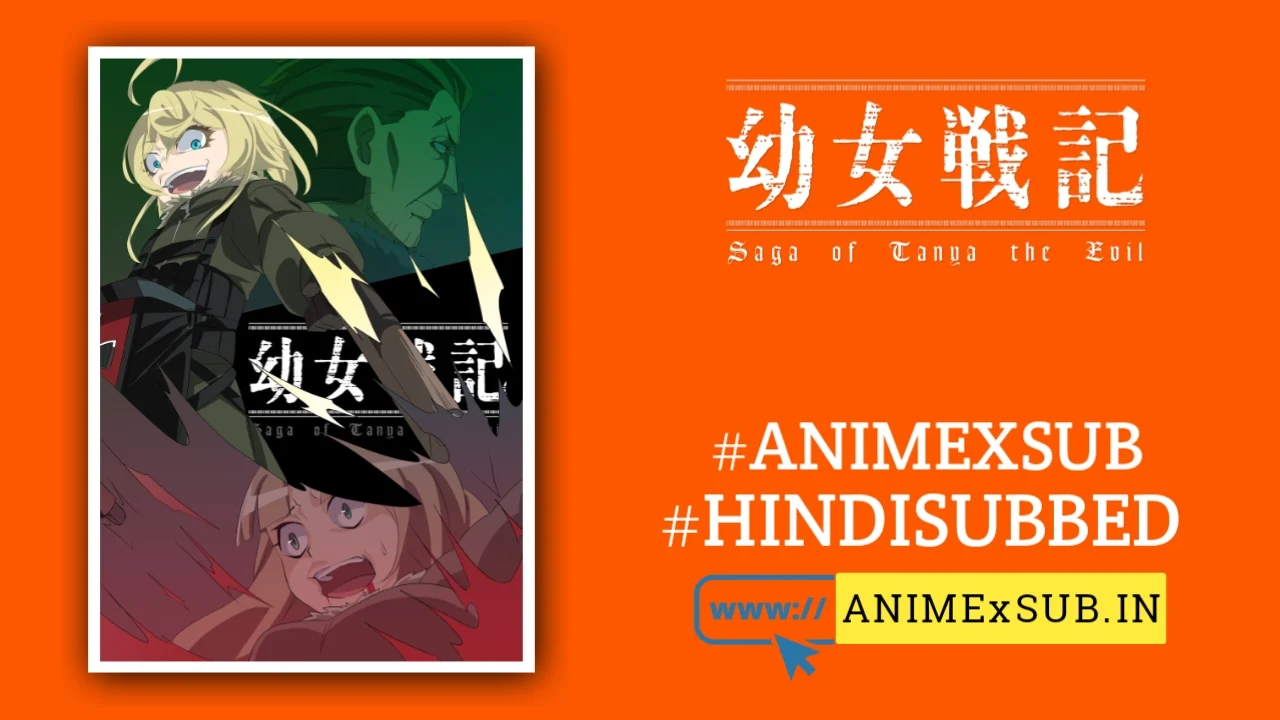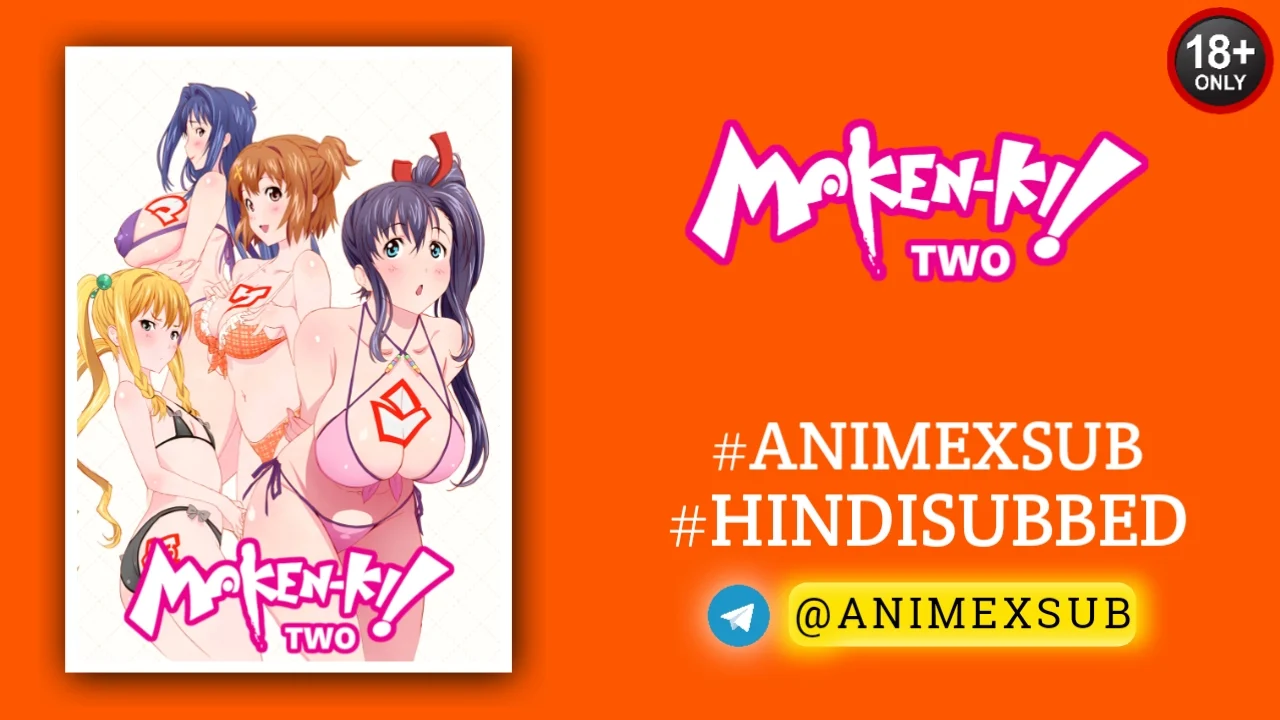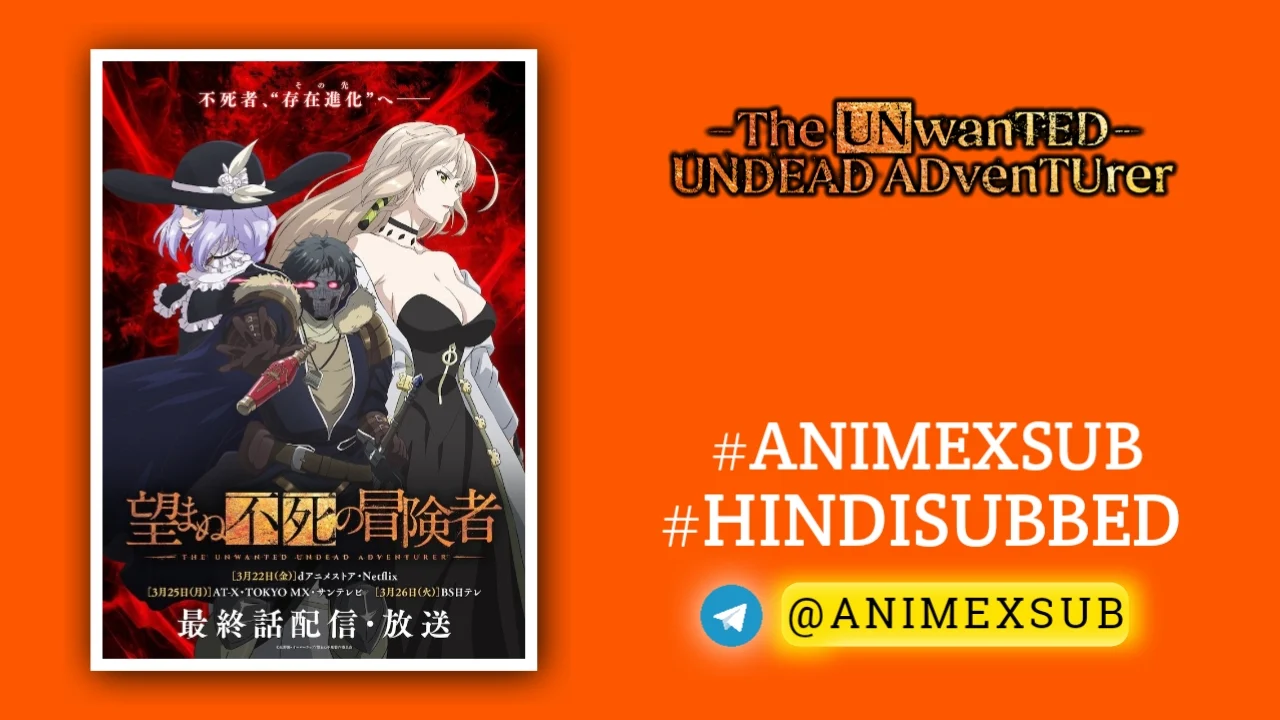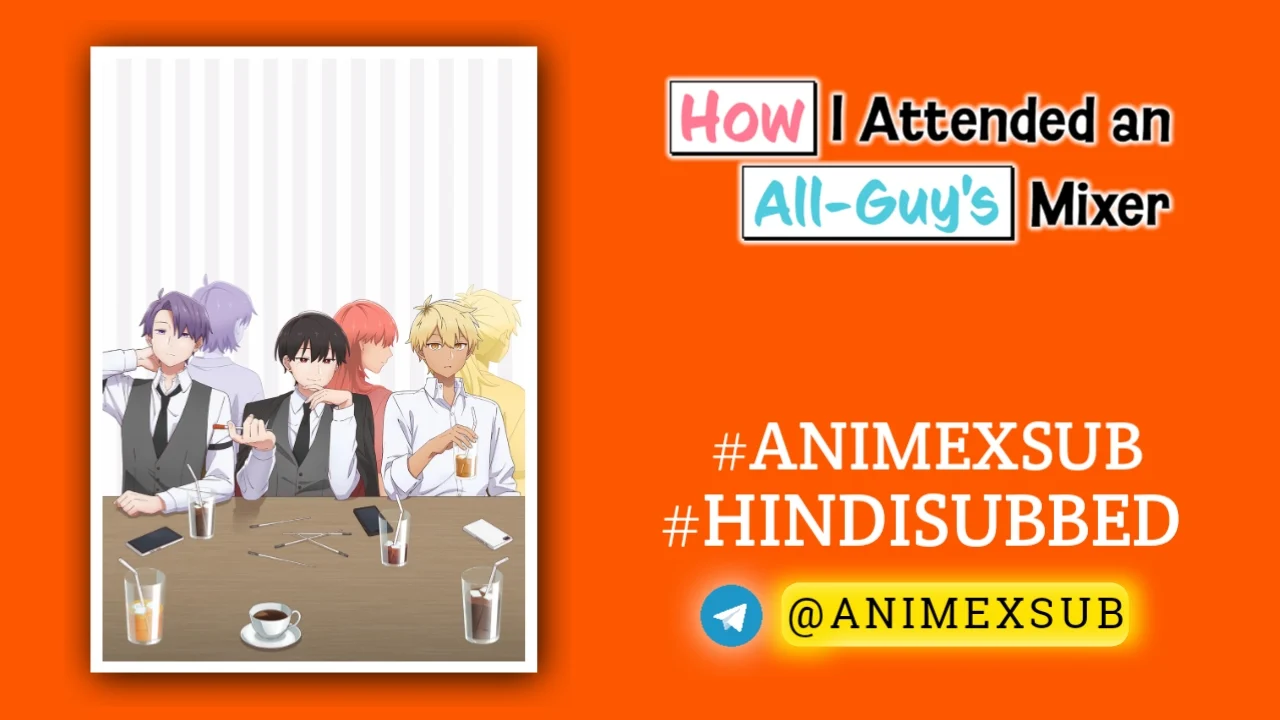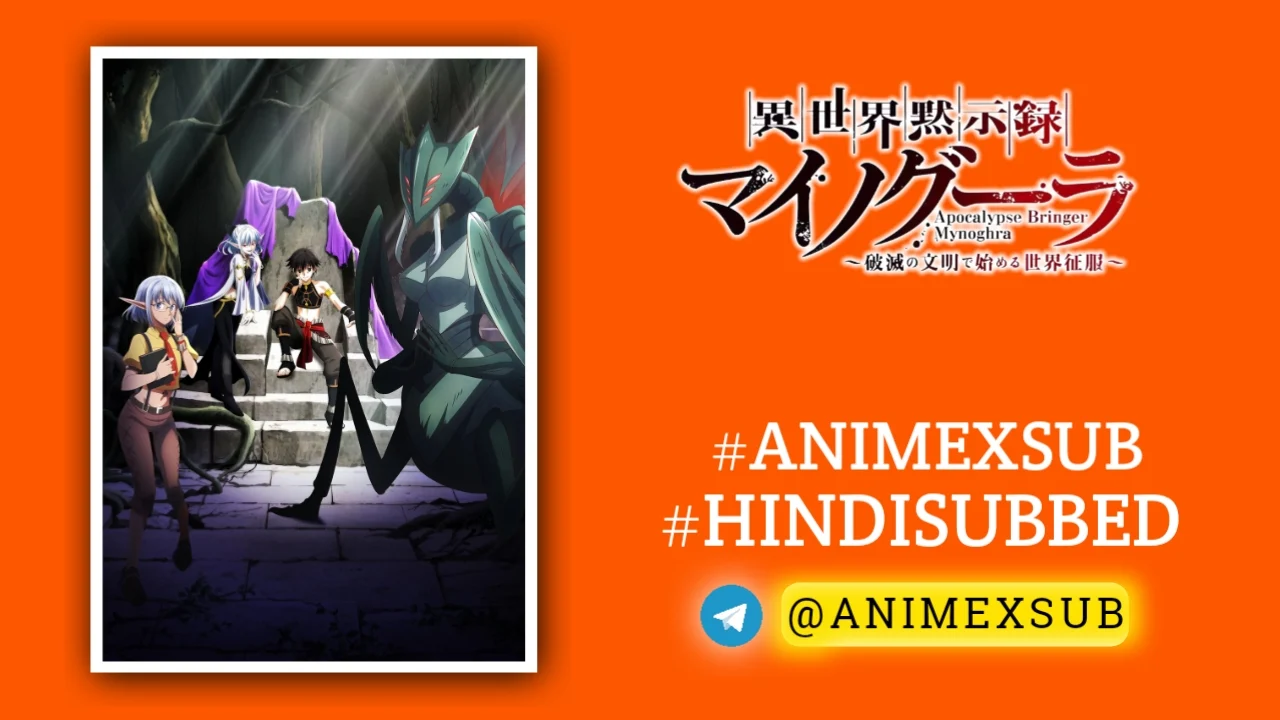
Apocalypse Bringer Mynoghra Hindi Subbed [11/12] | Isekai Mokushiroku Mynoghra Hindi Sub

Isekai Mokushiroku Mynoghra: Hametsu no Bunmei de Hajimeru Sekai Seifuku
Apocalypse Bringer Mynoghra: World Conquest Starts with the Civilization of RuinSynopsis
Takuto Ira succumbed to illness at a young age and ended up reincarnating in a world that resembles the fantasy turn-based strategy game Eternal Nations. Not only did he reincarnate into his favorite game, but as the god who commands the evil civilization Mynoghra. With Mynoghra's beautiful hero unit, Sludge Witch Atou by his side, not even legendarily difficult race traits will stand in the way of restarting their civilization! “Lord Takuto…won't you start over with me?” Explore, Expand, Exploit, Exterminate! A tactical fantasy world is waiting for heroes like you! Join Eternal Nations today! (Source: Cross Infinite World)
Watch Trailer
Characters
Episodes
How To Download Tutorial
The Genesis of a Doomed Dominion
In the sprawling landscape of isekai narratives, where protagonists often awaken to heroic destinies amid swords and sorcery, Apocalypse Bringer Mynoghra: World Conquest Starts with the Civilization of Ruin carves a distinctly ominous path. Serialized initially on Shōsetsuka ni Narō in 2017 by author Fehu Kazuno, with illustrations by Jun, this light novel series flips the genre’s tropes by thrusting its lead, Takuto Ira, into the role of an “evil” overlord. Takuto, a terminally ill young man in our world, dies and reincarnates within Eternal Nations, a turn-based strategy game he adored. But instead of a balanced kingdom or a plucky adventurer’s guild, he inherits Mynoghra—a civilization branded as the harbinger of apocalypse, complete with traits that curse it with perpetual hostility from the world’s “good” factions.
What sets this premise apart is its unflinching embrace of asymmetry. Mynoghra isn’t just “evil” for spectacle; its mechanics in the game’s lore demand ruinous expansion, where building a single settlement triggers divine sanctions and monster hordes. Takuto, portrayed as a fundamentally kind soul despite his demonic title, grapples with this irony. Accompanied by Atou, his loyal Sludge Witch retainer—a beautiful yet grotesque entity born from primordial ooze—he must navigate survival in a forest exile, far from the game’s central continents. This setup isn’t mere fan service; it’s a commentary on how labels of morality in fantasy worlds can stifle nuance, forcing even benevolent rulers into villainy.
The series’ world-building shines in its layered cosmology. Eternal Nations unfolds across multiple realms: the mortal plane, where human empires clash with elven enclaves; the abyssal depths teeming with eldritch horrors; and ethereal divine realms enforcing a fragile balance. Mynoghra’s “ruin” civilization draws from Lovecraftian dread, blending insectoid swarms, necrotic plagues, and shadowy espionage. Unlike standard 4X strategy tales, where expansion feels triumphant, here every advancement risks awakening ancient curses, making progression a tense calculus of risk and restraint.
Architectural Annihilation: Mynoghra’s Mechanics Unveiled
At its core, Apocalypse Bringer Mynoghra excels as a meta-exploration of strategy game design, dissecting what makes an “unwinnable” faction compelling. Mynoghra’s units and buildings are engineered for despair: the Sludge Witch Atou, Takuto’s right hand, manipulates corrosive slimes for reconnaissance and sabotage, but her powers erode the land, accelerating environmental collapse. Enter Isla, the Queen of Bugs—a colossal mantis-like heroine whose larva minions excel at labor but wither without her oversight, embodying fragile overabundance.
The novel’s early arcs detail Takuto’s settlement-building with surgical precision. Basic structures like the Dark Citadel spawn undead laborers, but they demand “corruption points” that corrupt nearby biomes, inviting inquisitorial crusades from holy orders. Advanced tech trees unlock horrors like plague engines or shadow veils, but activation often triggers “calamity events”—random disasters mirroring real strategy game RNG, but narratively tied to the world’s gods viewing Mynoghra as a cosmic error.
This system’s brilliance lies in its subversion of power fantasies. Takuto’s victories aren’t brute-force conquests; they’re clever exploits of the game’s rules, like allying with neutral monsters or infiltrating rival economies with bug spies. Kazuno weaves in philosophical undertones: Is conquest truly evil if it stems from self-preservation? Readers familiar with games like Civilization or Age of Wonders will appreciate how the prose simulates turn-based decisions, with chapters often structured as “turns” where Takuto weighs diplomacy against doom.
The manga’s adaptation, running parallel since 2019 under Micro Magazine’s GC Novels imprint, amplifies this through Jun’s visceral art. Panels of writhing sludge and chitinous hordes convey the grotesque beauty of Mynoghra’s aesthetic—rainbow-sheened wings on Isla contrasting the putrid greens of corrupted forests—making the ruin feel alive and inevitable.
Character Constellations: Heroes in the Hive
Takuto Ira stands as the series’ moral anchor, a reluctant god-king whose “evil” alignment belies his empathy. His arc explores isolation: bedridden in life, omnipotent in death, yet haunted by the fear of dooming innocents. Atou, his demonic companion, provides levity and depth; her obsessive devotion masks a tragic origin as a forgotten game asset, now fiercely protective. Their dynamic—banter amid apocalypse—humanizes the horror, with Atou’s sludge form allowing for inventive combat, like dissolving foes into informational wisps.
Isla adds maternal ferocity, her bug empire fostering a hive-mind loyalty that contrasts Takuto’s individualism. Supporting cast, like the necromantic advisor Galgano or the espionage specialist Kai, form a dysfunctional family, each embodying Mynoghra’s facets: undeath, intrigue, and raw survival. Antagonists, such as the saintly Order of the Stars, aren’t caricatures; their zealotry stems from genuine faith, blurring lines between hero and villain. This ensemble drives emotional stakes, turning conquest into a tapestry of alliances forged in mutual desperation.
The Anime Ascension: Visualizing the Void
The 2025 anime adaptation, produced by a studio blending Overlord‘s dark fantasy with Log Horizon‘s tactical flair, elevates the source material to new heights. Premiering this fall on Crunchyroll, it boasts fluid animation for Mynoghra’s morphing units—slimes bubbling into weapons, bugs swarming in fractal patterns—and a soundtrack fusing orchestral dread with industrial percussion. Voice acting shines: Takuto’s weary resolve (voiced by a newcomer evoking quiet intensity) pairs with Atou’s sultry menace, making dialogues crackle.
Early episodes condense the novel’s setup masterfully, using game-like UI overlays to explain mechanics without info-dumps. Fights feel strategic, not flashy—positioning larva for ambushes or Atou’s corrosion eroding enemy lines—rewarding viewers who track the meta-layer. By episode 11, as Takuto brokers a tense conference with a neighboring queendom, the anime delves into geopolitical intrigue, hinting at larger threats like the “Eternal Eclipse,” a cataclysm Mynoghra might unwittingly hasten.
Critically, the adaptation avoids common pitfalls: no filler arcs, instead expanding lore with original “what-if” visions of alternate game paths Takuto contemplates. It’s a benchmark for isekai anime, proving that “evil” protagonists can drive empathetic storytelling.
Thematic Torrents: Beyond the Ruin
Apocalypse Bringer Mynoghra transcends genre escapism by probing real-world parallels. Mynoghra’s cursed expansion mirrors environmental debates—growth at the cost of sustainability—while Takuto’s “evil” label critiques societal othering, where marginalized groups are demonized preemptively. Disability themes resonate through Takuto’s pre-reincarnation frailty, framing his godhood as empowerment through adversity.
In a post-pandemic era, the series’ focus on isolation and fragile communities feels prescient, with Mynoghra’s hive as a metaphor for resilient networks. Its exploration of game worlds as escapist refuges questions escapism’s limits: Can one “win” a rigged system without breaking it?
Endgame Echoes: Why Mynoghra Endures
As the light novels surpass a dozen volumes and the anime gears up for its mid-season climax, Apocalypse Bringer Mynoghra redefines isekai by celebrating the underdog’s apocalypse. It’s not about glorifying destruction but illuminating paths through it—strategic, sorrowful, and strangely hopeful. For fans of cerebral fantasy, this series offers a ruinous revelation: True conquest begins with understanding the game’s cruel code.1











